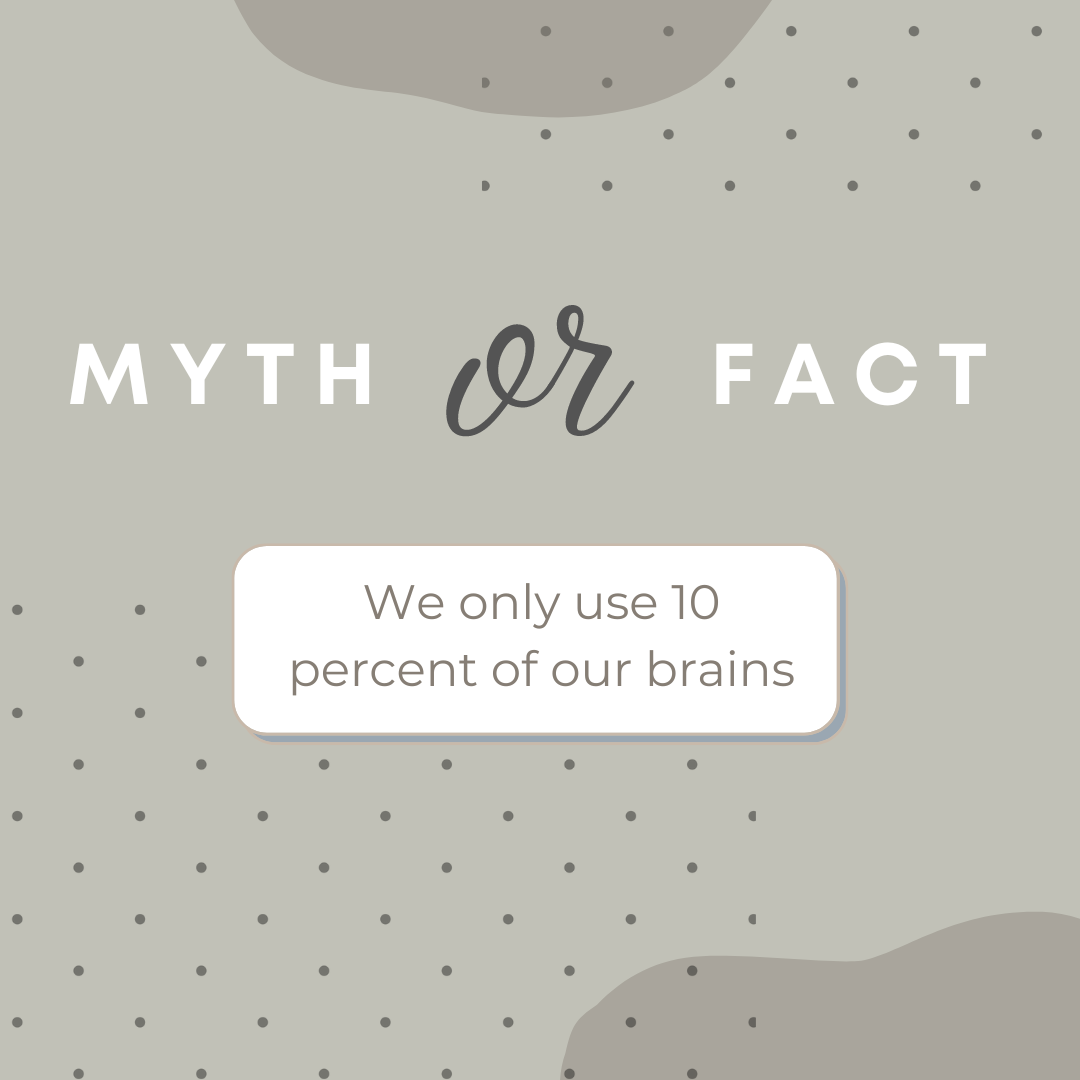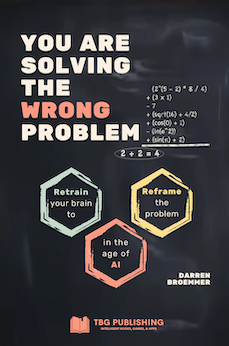
Fact or fallacy?
Category: Self Improvement
Tags: Problem Solving
Ask yourself whether the truths you believe are:
- True because they are empirically true
- True because you have repeatedly heard them
Many things are stated in the news and social media because they serve a purpose. They serve the purpose of those invested in the idea. This does not necessarily make them true.
Always be curious.
For example, do you believe the following statement is true?
A sugar rush makes kids hyperactive.
Many parents believe that sugar makes their kids hyper. They joke that it causes them to bounce off the walls. However, numerous scientific studies have been conducted, and no evidence was found that sugar impacts behavior or cognitive performance in children. While some kids do show excitement when getting sugary treats, the sugar itself does not directly induce hyperactivity. Their reaction is more likely due to the stimulating context surrounding the treats themselves.
A frequently cited 1994 study published in the New England Journal of Medicine looked at the impact of sugar on the behavior and cognitive function of children. Researchers conducted double- blind, placebo-controlled trials with normal preschool-aged boys who were considered “sensitive” to sugar by their mothers. The boys were observed under controlled conditions after getting either a sugar drink or a placebo. The study found no differences in behavior, including hyperactivity, aggressiveness, or inattention, between the sugar and placebo groups.
Likewise, a recent study in 2016 Advances in Nutrition conducted a systematic review of eight randomized, controlled trials. These tri- als assessed the effects on children of sugar. Specifically, it looked at concentration, behavior, and cognitive function. They found no consistent evidence that sugar negatively impacts behavior or cognitive outcomes relative to starch or sweet placebo controls.
Are you still holding onto this belief after hearing this?
Consider another example. Do you believe the following statement is true?
We only use 10% of our brains.
This belief is incredibly widespread, yet there is no scientific evidence to support it. Brain imaging shows that even during simple activities, most areas of the brain are active. It’s true that we may not use our brains to their full potential capacity, but we certainly use more than 10%.
A 1999 PET review paper looked at activation patterns measured in brain imaging studies during different tasks. They found no evidence for the myth of only using 10% of our brain capacity. Instead, they found that nearly 100% of the brain took part in at least one vital neural pathway, even for simple tasks.
More recently in 2007, researchers used MRI scans to map tiny changes related to neural activity in the brain while subjects per- formed language, visual, motor, and cognitive tasks. They found functional activity across nearly the whole brain volume, with only small scattered holes representing less active areas.
Have you changed your mind now?
The most important subject you barely studied in school
If you had to pick only three subjects to study in school, what would they be? For me, the three most important subjects would be:
- Mathematics: You learn logic and concepts that can be applied to almost every area of life.
- Philosophy: You learn how to think, both abstractly and concretely. It shows you how to question even the most basic things, as you will be surprised about what you discover.
- Economics: You learn how to reason through the way the world works, and why it is that way.
Math is the only subject in life where you can actually prove things to be true. You don’t need empirical observations to be sure that 2 + 2 = 4. There are almost no other subjects that work this way.
Any science class that you take will refer to scientific studies. These studies make conclusions based on observations, not proofs. The data leads to a confirmation of a hypothesis with a certain degree of confidence. You would be surprised at how many things that we think we know, but we are only fairly confident they work.
As an example, I take daily medication for anxiety. The medicine is in a family of drugs called Selective Serotonin Reuptake Inhibitors (SSRIs). This is a fancy medical term for a drug that makes sure you have enough serotonin active in your body. Serotonin is a neurotransmitter that plays a key role in regulating mood and happiness. It helps regulate your appetite and sleep patterns.
Now, with that said, scientists don’t know exactly how these drugs help people deal with anxiety. While scientists have a good understanding of the general mechanisms of SSRIs, the precise details are not fully understood. The effectiveness of SSRIs in easing anxiety is thought to be linked to their impact on serotonin levels in the brain.
So do I still take the medicine? Yes, of course, because it works. I would love to know exactly how it works, but for now, I will be satisfied with the fact that it does work. I am still curious though.
To be completely fair, there are things you can prove in science. You can prove a negative. If you find evidence that contradicts a claim, then you can show that the hypothesis is false. However, all the evidence that you find can only increase your confidence in the hypothesis. It can’t prove it. Unless you are talking about math.
Geometry proofs were fascinating to me in high school. At the time, I hadn’t yet realized their full utility, but they seemed like interesting puzzles to solve. This is why I chose the geometry class scenario as an exercise for this book.
Another fascinating aspect of geometry is the utility of triangles. Did you know that computer and video game graphics engines are primarily based on drawing triangles? A polygon with three vertices in space constitutes a triangle, representing the most basic geometric shape. The simplicity of triangles facilitates straight- forward, quick calculations. Speed is a critical factor in real-time rendering for gaming applications.
Triangles are so versatile, you can draw almost any other shape using them. A square can be constructed using two right triangles. A pentagon or star requires more patterns, but it can be done. While this statement may seem intuitive, proving it rigorously depends on the specific mathematical framework and definitions used. For example, can you draw a circle using triangles? On a computer screen with pixels, you can. It depends on the framework in which you ask the question.
So what does all of this about triangles and geometry have to do with problem-solving? Axiom or assumption
While we can’t abstractly prove that triangles can be used to draw any shape, we believe it to be true. Computer graphics depend on this assumption. Aha, we have the word “assumption”. But is that the correct word for it? I would argue it is an axiom, not an assumption. The definition of axiom is “a statement or proposition which is regarded as being established, accepted, or self-evidently true.” The last part of the definition is the clearest: “self-evidently true”. We use it as a basis upon which to prove or construct other things. We do this, despite the fact that we can’t formally prove it. I can’t formally prove to you that the sun will come up tomorrow, but we can go on living based on the fact that it will.
In Euclidean geometry, the statement “A straight line segment can be drawn joining any two points” is typically accepted as one of the fundamental postulates or axioms. It is not proven within the system of Euclidean geometry but rather serves as a starting assumption upon which the rest of the geometry is built.
Your job during problem-solving is differentiating axioms versus assumptions. An assumption is something that should be ques- tioned. The Curiosity Rule dictates this. An axiom is a self-evident truth upon which we solve other problems. Ideally, you should have a very small number of axioms.
The value of economics
I took only the basic micro and macroeconomics classes in school. I’ve read a lot on the subject since. I wish I had studied these topics in depth. One reason that you should study them is cause and effect. Economists are very good at examining the cause and effect of events. They are good at looking past assumptions and getting to the root cause of outcomes. These are important problem-solving skills.
For example, let’s take a look at "smart growth" policies. This term generally refers to economic and community development plans that aim to curb urban sprawl and promote sustainable environmental conditions. This definition assumes that "urban sprawl" is a bad thing. When businesses and homes are spread out, workers generally require a car. However, it has been shown in multiple studies, including Car Ownership, Employment, and Earnings, that "having access to a car is an important determinant of labor market outcomes."
If you don’t have a car, you are less likely to have a job and earn a decent income. Public transportation alone is not a sufficient replacement for a car. A study in Portland, Oregon found that 95% of white families owned one or more cars, while only 75% of black families owned a car. The challenge with what is often referred to as "smart growth" lies in the fact that the restrictions it places on automobile usage disproportionately affect individuals with lower incomes and those who have recently gained or are close to achieving access to automobiles. This hardly seems smart.
Stepping back, why do people live in cities? Why is urban crowding (my term) a good thing, i.e. the opposite or urban sprawl? Cities are essentially planned crowding. Common answers will include that people want to be close to everything. Fewer cars on the road mean less congestion and less pollution. However, most things in cities require some form of transit. Not everything is located one block away. So you still need to take the subway, metro, or bus. These forms of transportation create pollution. The idea is that the amount of pollution is less if there are enough people that move from their vehicles to public transport. However, people’s freedom of movement is more limited. The relationship between economic outcomes and automobiles is clear, under the current conditions. Do smart growth policies move the needle enough to shift that balance?
Consider a different question. Are freeways free?
Ignore for a moment that the roads were built with taxpayer dollars. Let’s say that is a sunk cost and we are only looking at the ongoing economics of the freeway. This is a classic application of the laws of supply and demand. One way to reduce traffic congestion is to build more roads. If the supply of roads can outpace the demand, a city is in good shape. However, more freeways can also increase the demand. If a toll road is built, there is an additional economic consideration in using it. A freeway encourages people to drive, so those who may not previously have driven will start doing so. If the average person spends more time in traffic on the freeway, there is a net loss to GDP. Time is money. Further, ambulances and emergency vehicles need to drive on the freeway. If it is congested, it will take longer for them to get to the scene of an accident or medical emergency. Life expectancy could actually go down because of the freeway. This hardly seems like it is free. They do indeed have a cost to them.
The only way to ascertain whether policy changes actually work is metrics. You need data, and that is where we will focus next.

